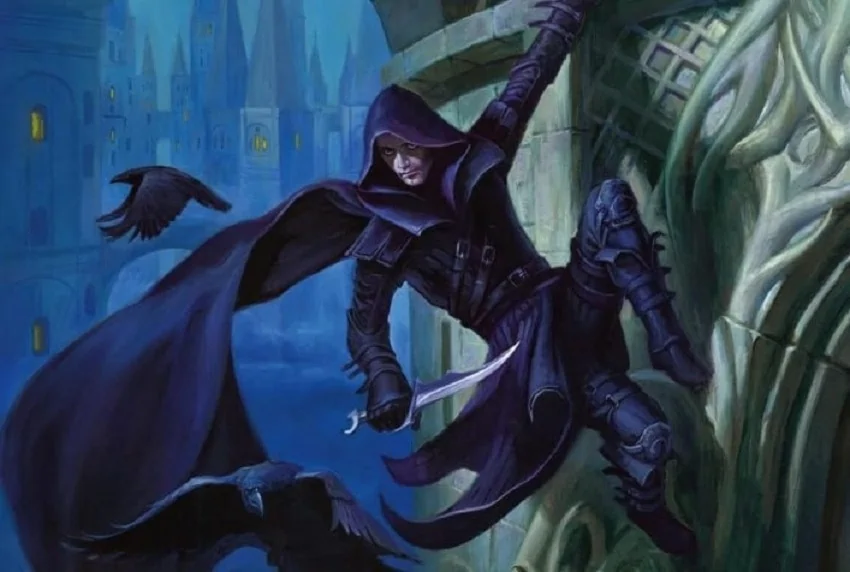The Rogue is an iconic character class in Dungeons & Dragons, and in D&D 5e you have plenty of subclass options to choose from too. If you want to play one of these dastardly miscreants in D&D, look no further. In this Rogue 5e Guide, we’ll tell you everything you need to know about Rogues, including:
- What are Rogues in 5e?
- How to create a Rogue
- What are the Roguish Archetypes in 5e?
- Frequently asked questions
What are Rogues in 5e?
First appearing as the ‘Thief’ class in the first edition of Dungeons & Dragons, the Rogue is one of the core character classes in D&D. Inspired by characters from fantasy literature such as Tolkien’s Bilbo Baggins, Cugel the Clever (from Jack Vance’s The Eyes of the Overworld), and Fritz Leiber’s The Gray Mouser.
In the third edition of D&D, the Thief became the Rogue to include any character that relies on stealth and sneaking – such as spies, scouts, detectives, pirates, and any ‘ne’er do well. In the fifth edition (5e), the Rogue has a variety of subclasses called ‘roguish archetypes’ that let players become a particular type of Rogue with specialist abilities.
How to create a Rogue
The first thing to consider when creating a Rogue character for D&D 5e is what your roguish archetype will be. You will not benefit from it until the 3rd level, but it will help you decide on your background and personality in the first instance. Below we’ll cover how to create a Rogue and what abilities they have and we’ll cover the roguish archetypes in detail in the next section.
Rogue statistics
Dexterity is the Rogue’s primary statistic, followed by either Intelligence or Charisma.
Rogue characteristics
- How many hit points do Rogues get?
Rogues get 8 hit points plus their Constitution modifier. After 1st level, Rogues get an additional 1d8 hit points per level. - What armor can Rogues wear?
Rogues are proficient in light armor. - What weapons can Rogues use?
Rogues are proficient in simple weapons, hand crossbows, longswords, rapiers, and shortswords. - What saving throws are Rogues proficient in?
Dexterity and Intelligence. This means that if your DM asks you to make a saving throw, you add your Dexterity or Intelligence modifier to the result. - What skills do Rogues have?
When you create a Rogue character, you can choose four of the following skills: Acrobatics, Athletics, Deception. Insight, Intimidation, Investigation, Perception, Performance. Persuasion, Sleight of Hand, and Stealth. - What equipment do Rogues start with?
In addition to any equipment granted by their background, Rogues start with the following equipment: a rapier OR a shortsword; a short bow and quiver of 20 arrows OR a shortsword; a burglar’s pack, a dungeoneer’s pack, OR an explorer’s pack; Leather armor, two daggers, and thieves’ tools.
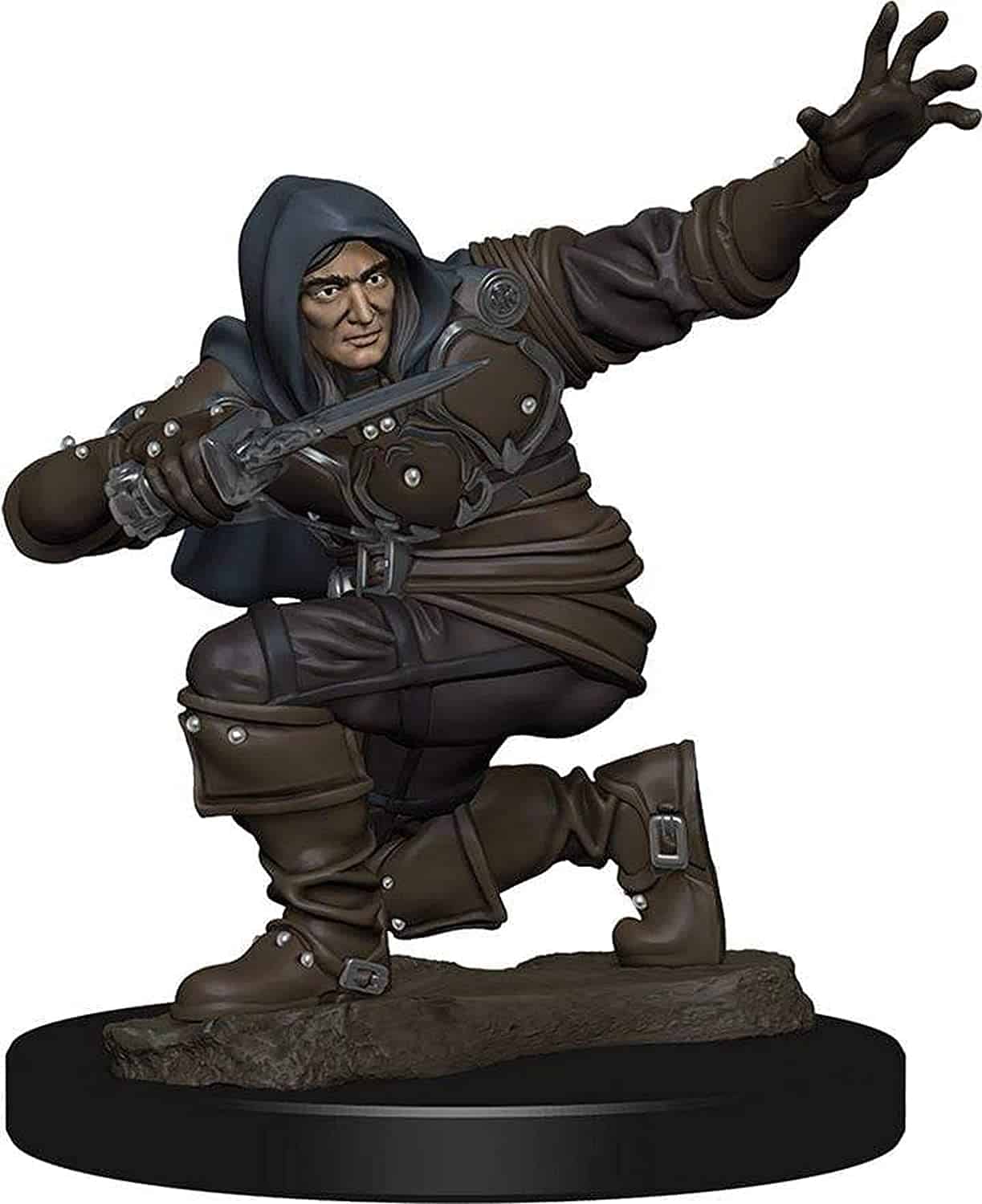
What special abilities do Rogues have?
All Rogues gain the following special abilities as they level up.
Sneak Attack
Once per turn, you can deal an extra 1d6 damage to one creature if you have an advantage on your attack roll. The attack must be done with finesse or ranged weapon. You don’t need an advantage if another enemy of the target is within 5ft of it and isn’t incapacitated. The amount of damage you deal increases each level as per the Sneak Attack column on the Rogue Table in The Player’s Handbook.
Thieves Cant
Thieves’ cant is a mixture of jargon, dialect, and code that allows you to hide messages in conversations with others who understand thieves’ cant. Thieves can also leave secret messages and signs in areas, which you can leave and understand, that may tell you things such as if the area is dangerous or if there’s loot nearby.
Cunning Action
At the 2nd level, Rogues can take a bonus action on each turn during combat to dash, disengage, or hide (or use an ability specified by your roguish archetype – see below).
Roguish Archetypes
At 3rd level, Rogues can choose a roguish archetype – which is, essentially, a subclass. See the next section for further details on these.
Ability Score Improvement
At 4th, 8th, 12th, 16th, and 19th levels, Rogues can increase one ability score by 2 or two ability scores by 1.
Uncanny Dodge
From 5th level onwards, if you are hit by an attacker you can see you can use your reaction to halve the damage.
Read also: Dodge Action 5e Guide.
Evasion
From 7th level onwards, if you are forced to make a Dexterity saving throw, you take half damage on a fail and no damage on a success.
Reliable Talent
At 10th level and above, whenever you make an ability check that lets you add your proficiency bonus, a d20 roll of 9 or lower is treated as a 10.
Blindsense
From 14th level onwards, you can hear and are aware of the location of any hidden or invisible creatures within 10ft.
Slippery Mind
When you hit 15th level, you have proficiency in Wisdom saving throws.
Elusive
From 18th level, no attack against you has an advantage so long as you are not incapacitated.sec
Stroke of Luck
Once in between long or short rests you can use each of the following features: If your attack misses a target, it becomes a hit and if you fail an ability check you can treat your d20 roll as a 20.
What are the Roguish Archetypes in 5e?
In The Player’s Handbook, there are three roguish archetypes for Rogues to choose from at 3rd level: Arcane Trickster, Assassin, and Thief. In this guide, however, we’re also including the roguish archetypes provided in Xanathar’s Guide to Everything (XGtE) and Tasha’s Cauldron of Everything (TCoE).
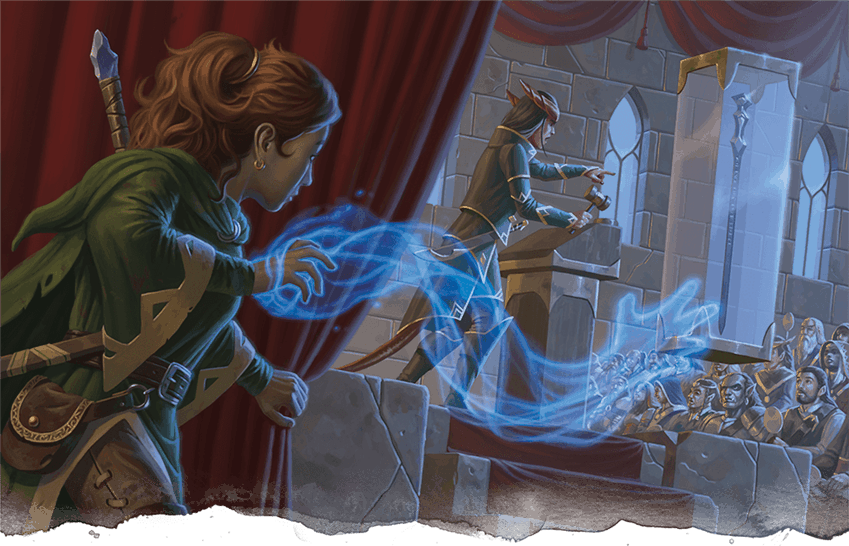
Arcane Trickster (PHB)
If you want to play a Rogue but you also want to use magic, the Arcane Trickster subclass is for you. Arcane Tricksters are often burglars, pickpockets, and mischief-makers who use magic and stealth for their own gain.
- Spellcasting
Arcane Tricksters can cast cantrips and Wizard spells. The number of spells they can learn and how many spell slots they have is detailed in the Arcane Trickster Spellcasting table in The Player’s Handbook. Here is an overview of Arcane Trickster spellcasting.- Cantrips: At 3rd level, you learn three cantrips – mage hand and two other cantrips from the Wizard’s cantrip list.
- Spells: At 3rd level, you know three 1st level Wizard spells, two of which must be enchantment and/or illusion spells. As you level up and learn more Wizard spells, you can only learn enchantment or illusion spells, except at 8th, 14th, and 20th when you can choose from any school of magic. Each level, you have the option to replace one of your learned spells with another Wizard spell, so long as, like any spell you learn, has the same level as the level of your spell slots.
- Spellcasting Ability: Intelligence is your spellcasting ability for your Wizard spells. Your spell save DC is 8 plus your proficiency bonus and your Intelligence modifier. Your spell attack modifier is your proficiency bonus plus your Intelligence modifier.
- Mage Hand Legerdemain
In addition to the standard use of the mage hand spell, you can also do the following:- Your mage hand can be invisible.
- You can retrieve an object worn or carried by someone else.
- You can use mage hand and your thieves’ tools to pick locks and disarm traps at range.
- You can perform one of these tasks without being noticed by a creature if you succeed on a Dexterity (Sleight of Hand) check contested by the creature’s Wisdom (Perception) check.
- You can use the bonus action granted by your Cunning Action ability to control the mage hand.
- Magical Ambush
From 9th level onwards, if you cast a spell on a creature that you are hidden from, that creature has disadvantage on any saving throw it makes against the spell this turn. - Versatile Trickster
At 13th level, you can distract targets with your mage hand. As a bonus action, you can choose a creature within 5ft of the hand and gain an advantage on all attack rolls made against that creature until the end of the turn. - Spell Thief
From 17th level onwards, if a creature targets you with (or you are included in the range of) a spell, you can use your reaction to force that creature to make a saving throw with its spellcasting ability modifier. On a failed save, you negate the spell’s effect against you and, if it is at least 1st level and of a level, you can cast (it doesn’t need to be a wizard spell) you steal the knowledge of the spell. For the next 8 hours, you know the spell and can cast it using your spell slots. The creature can’t cast that spell until the 8 hours have passed. This can only be done once in between long rests.
Assassin (PHB)
Rogues who specialize in the ‘grim art of death’ are often assassins. They could be spies, hired killers, bounty hunters, or even anointed priests who use their abilities for targeted kills.
- Proficiency Bonus
You gain proficiency with the disguise kit and the poisoner’s kit. - Assassinate
You have an advantage on attack rolls against any creature which hasn’t taken a turn in combat yet and any hit you score against a surprised creature is a critical hit. - Infiltration Expertise
From 9th level onwards, you can create a false identity. You must spend 7 days and 25gp to establish history, profession, and affiliations for your false identity. Other creatures will believe you to be that person unless they have a reason not to. - Imposter
At 13th level, you have the ability to mimic someone’s speech, writing, and behavior. You must spend 3 hours studying this person and other creatures will believe you are them. If a creature suspects you, you have advantage on any Charisma (Deception) check you make to avoid detection. - Death Strike
From 17th level onwards, if you attack a surprised creature it must make a Constitution saving throw (DC 8 plus your Dexterity modifier and your proficiency bonus). On a failed save, double the damage of your attack against the creature.
Inquisitive (XGtE)
Inquisitive Rogues have learned to use their eyes and ears to unravel mysteries and outwit their opponents in combat. These Rogues could be private detectives or vigilantes.
- Ear for Deceit
Whenever you make a Wisdom (Insight) check to determine if someone is lying, treat a roll of 7 or lower on a d20 as an 8. - Eye for Detail
You can use a bonus action to make a Wisdom (Perception) check to spot a hidden creature or object or to make an Intelligence (Investigation) check to uncover or decipher clues. - Insightful Fighting
As a bonus action during combat, you can make a Wisdom (Insight) check against a creature, contested by their Charisma (Deception) check. If you succeed, you can use your Sneak Attack against that target even if you don’t have the advantage of your attack roll (but not if you have a disadvantage). This lasts for 1 minute or until you successfully use this feature against a different target. - Steady Eye
Beginning at 9th level, you have an advantage on any Wisdom (Perception) or Intelligence (Investigation) check if you move no more than half your speed on your turn. - Unerring Eye
At 13th level onwards, as an action, you sense the presence of illusions, shapechangers not in their original form,
and other magic designed to deceive the senses within 30ft of you. You sense that an effect is attempting to trick you but you gain no insight into what is hidden or into its true nature. This can be used several times equal to your Wisdom modifier (min. once) in between long rests. - Eye for Weakness
When you reach 17th level, while your Insightful Fighting feature applies to a creature, your Sneak Attack damage against that creature increases by 3d6.
Mastermind (XGtE)
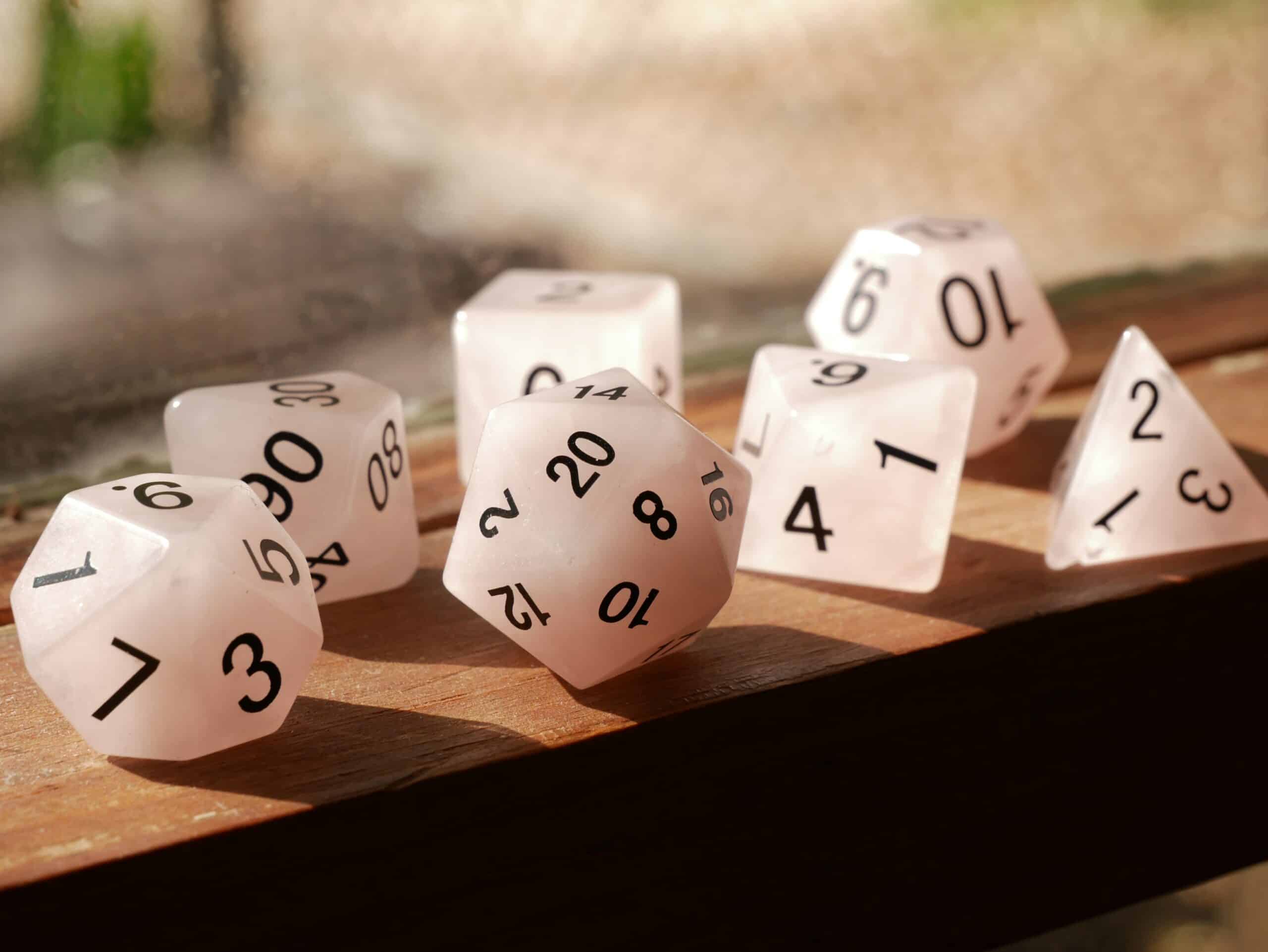
Spies, courtiers, and schemers who specialize in influencing overs and uncovering their secrets often choose the Mastermind archetype. They use words, weapons, and manipulation to win their battles.
- Master of Intrigue
You gain proficiency with the disguise kit, the forgery kit, and one gaming set of your choice. You also learn two languages of your choice. You can also mimic the speech patterns and accent of a creature that you hear speak
for at least 1 minute – provided that you know the language. - Master of Tactics
You can use the Help action (Read our complete Help Action 5e Guide) as a bonus action. When you use the Help action to aid an ally in attacking a creature, the target of that attack can be within 30 feet of you, rather than within 5 feet of you, so long as the target can see or hear you. - Insightful Manipulator
From 9th level onwards, if you spend at least 1 minute observing or interacting with another creature outside combat, you can learn certain information about its capabilities in comparison to your own. The DM can tell you if two of the following characteristics (your choice) are inferior, equal, or superior to your own. In addition to this, the DM may also tell you something about the creature’s history or personality.- Intelligence score.
- Wisdom score.
- Charisma score.
- Class level (if any).
- Misdirection
When you reach 13th level, whenever you are targeted by an attack while a creature within 5ft of you is granting you cover against that attack, you can use your reaction to have the attack target that creature instead of you. - Soul of Deceit
From 17th level onwards, your thoughts can’t be read by telepathy or other means, unless you allow it. You can also present false thoughts by succeeding on a Charisma (Deception) check contested by the mind reader’s Wisdom (Insight) check. In addition to this, magic that would determine if you are telling the truth indicates you are being truthful if you so choose and you can’t be compelled to tell the truth by magic.
Phantom (TCoE)
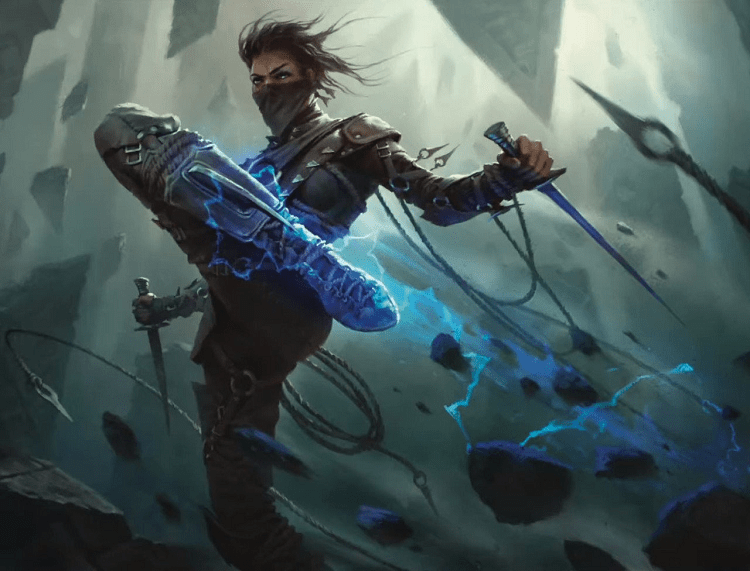
Rogues who have communed with the dead and learn their secrets often become like ghosts themselves. The Phantom roguish archetype is for Rogues who tread a fine line between life and death and use macabre techniques in combat.
- Whispers of the Dead
Whenever you finish a short or long rest, you can choose one skill or tool proficiency that you lack and gain
it, as a ghostly presence shares its knowledge with you. You lose this proficiency when you use this feature to choose a different proficiency. - Wails from the Grave
When you deal your Sneak Attack damage, you can immediately target a second creature you can see that is within 30ft of the first target. Roll half the number of Sneak Attack dice (rounded up) and deal necrotic damage equal to the result. This can be done several times equal to your proficiency bonus in between long rests. - Tokens of the Departed
From 9th level onwards, when a creature that you can see dies within 30ft of you, you can use your reaction to open your free hand and a tiny trinket will appear in it – a soul trinket. The maximum number of trinkets you can have is equal to your proficiency modifier. Trinkets can be used for the following purposes:- While you carry a soul trinket, you have an advantage on death-saving throws and Constitution-saving throws.
- When you deal Sneak Attack damage, you can destroy a soul trinket to immediately use Wails from the Grave without expending a use of that feature.
- You can use an action to destroy a soul trinket and ask the spirit associated with it one question. The spirit answers in its own language and has no obligation to be truthful. It will answer as concisely as possible and knows only what it knew in life.
- Ghost Walk
Beginning at 13th level, you can take a bonus action to assume a spectral form for 10 minutes or until you end it as a bonus action. This gives you a flying speed of 10ft and you can hover. While in the air, attack rolls made against you have disadvantages. You can also move through creatures and objects as if they are difficult terrain but you take 1d10 force damage if you end your turn inside a creature or object. This feature can only be used once in between long rests or if you destroy a soul trinket as part of your bonus action to do this feature. - Death’s Friend
At 17th level, you gain the following benefits:- When you use Wails from the Grave, you deal the same necrotic damage to the second target as you did to the first.
- At the end of a long rest, a soul trinket appears in your hand if you have no soul trinkets.
Scout (XGtE)

Skilled in stealth and survival, Scouts are at home in the wilderness and often act as the eyes and ears for traveling warbands or as bounty hunters.
- Skirmisher
You can move up to half your speed as a reaction when an enemy ends its turn within 5ft of you. This movement doesn’t provoke opportunity attacks. - Survivalist
You gain proficiency in Nature and Survival skills if you don’t already have them. Your proficiency bonus is doubled for any ability check you make that uses either of those proficiencies. - Superior Mobility
When you reach 9th level, your base walking speed increases by 10ft. If you have a climbing and/or swimming speed, these increase by 10ft as well. - Ambush Master
Beginning at 13th level, You have an advantage on initiative rolls and the first creature you hit during the first round of combat becomes easier for you and others to strike – attack rolls against that target have an advantage until the start of your next turn. - Sudden Strike
At 17th level onwards, if you take the Attack action on your turn, you can make one additional attack as a bonus action. This attack can benefit from your Sneak Attack even if you have already used it this turn, but you can’t use your Sneak Attack against the same target more than once in a turn.
Soulknife (TCoE)
The Soulknife uses psionic powers to injure their enemies’ bodies and minds. Often employed as spies, these Rogues are not always trusted by others but their powers over the mind are valuable assets.
- Psionic Power
You gain a number of psionic energy dice equal to your proficiency bonus. At 3rd level, these dice are d6s, but at 5th level they increase to d8s, d10s at 11th level, and d12s at 17th level. The abilities these grants you often require you to expend them. Once in between short or long rests, you can use a bonus action to regain one expended psionic energy die. You regain all expended dice after a long rest. At 3rd level and above, the psionic energy dice can be used for the following features:- Psi-Bolstered Knack: If you fail an ability check using a skill or tool that you are proficient in, you can roll one psionic energy die and add the number rolled to the check. If this means you now succeed on the check, the psionic energy die is expended.
- Psychic Whispers: As an action, you can choose one or more creatures that you can see (up to a number equal to your proficiency bonus) and roll one psionic energy die. For a number of hours equal to the result of the die, you and the chosen creatures can communicate telepathically with each other. You must be within 1 mile of each other but you don’t need to share a common language. The first time you use this feature in between long rests, you do not expend the die, but you do expend it whenever you use it after the first time.
- Psychic Blades
Whenever you take an attack action, you can manifest a shimmering blade in your free hand and attack with it. This blade is a simple melee weapon with finesse and thrown properties. It can be thrown up to 60ft and deals 1d6 psychic damage plus the ability modifier you used for the attack roll. The blade vanishes after hitting or missing a target and after attacking with it you can make a melee or ranged attack with a second psychic blade a bonus action on the same turn, provided that the other hand is free. The damage dies for the second blade is 1d4 instead of 1d6. - Soul Blades
At 9th level, the following powers are gained for your psychic blades using your psionic energy dice:- Homing Strikes: If you miss a target with your psychic blades, you can roll one psionic energy dice and add the result to your attack roll. If this means you now succeed and hit the target, that psionic energy dice is expended.
- Psychic Teleportation: As a bonus action, you manifest one of your psychic blades, expend one psionic energy die and roll it, and throw the blade at an unoccupied space you can see, up to a number of feet away equal to 10 times the number rolled. You then teleport to that space, and the blade vanishes.
- Psychic Veil
From 13th level onwards, as an action, you can magically become invisible, along with anything you are wearing or carrying, for 1 hour, until you choose to end the effect when you deal damage to a creature, or until you force a creature to make a saving throw. This can be done once in between long rests or you can expend psionic energy die to use the feature again. - Rend Mind
Once you’ve reached 17th level, whenever you use your psychic blades to deal Sneak Attack damage to a creature, you can force that target to make a Wisdom saving throw (DC equal to 8 plus your proficiency bonus and your Dexterity modifier). If the save fails, the target is stunned for 1 minute. The stunned target can repeat the saving throw at the end of each of its turns, ending the effect on itself on a success. This can be done once in between long rests or you can expend psionic energy die to use the feature again.
Swashbuckler (XGtE)
Trained in the speed and elegance of sword-fighting, the Swashbuckler is a charming yet deadly Rogue who excels in single combat. Light on their feet and able to dart around opponents twice as armored as they are, Swashbucklers thrive when they can showcase their talent and charms.
- Fancy Footwork
During your turn, if you make a melee attack against a creature, that creature can’t make opportunity attacks
against you for the rest of your turn. - Rakish Audacity
You can give yourself a bonus to your initiative rolls equal to your Charisma modifier. Additionally, you don’t need advantage on the attack roll to use your Sneak Attack against a creature within 5ft of you so long as no other creatures are within 5 feet of you and you don’t have a disadvantage on the attack roll. All the other rules for Sneak Attack still apply. - Panache
Once you reach 9th level, as an action, you can make a Charisma (Persuasion) check contested by a creature’s Wisdom (Insight) check for one of the following effects. For both of these effects, the creature must be able to hear you and the two of you must share a language.- If you succeed on the check and the creature is hostile to you, it has a disadvantage on attack rolls against targets other than you and can’t make opportunity attacks against targets other than you. This effect lasts for 1 minute until one of your companions attacks the target or affects it with a spell, or until you and the target are more than 60 feet apart.
- If you succeed on the check and the creature isn’t hostile to you, it is charmed by you for 1 minute. This effect ends immediately if you or your companions do anything harmful to it.
- Elegant Maneuver
From the 13th level onwards, you can use a bonus action on your turn to gain an advantage on the next Dexterity (Acrobatics) or Strength (Athletics) check you make during the same turn. - Master Duellist
Beginning at 17th level, once in between long or short rests, if you miss with an attack roll, you can roll it again with an advantage.
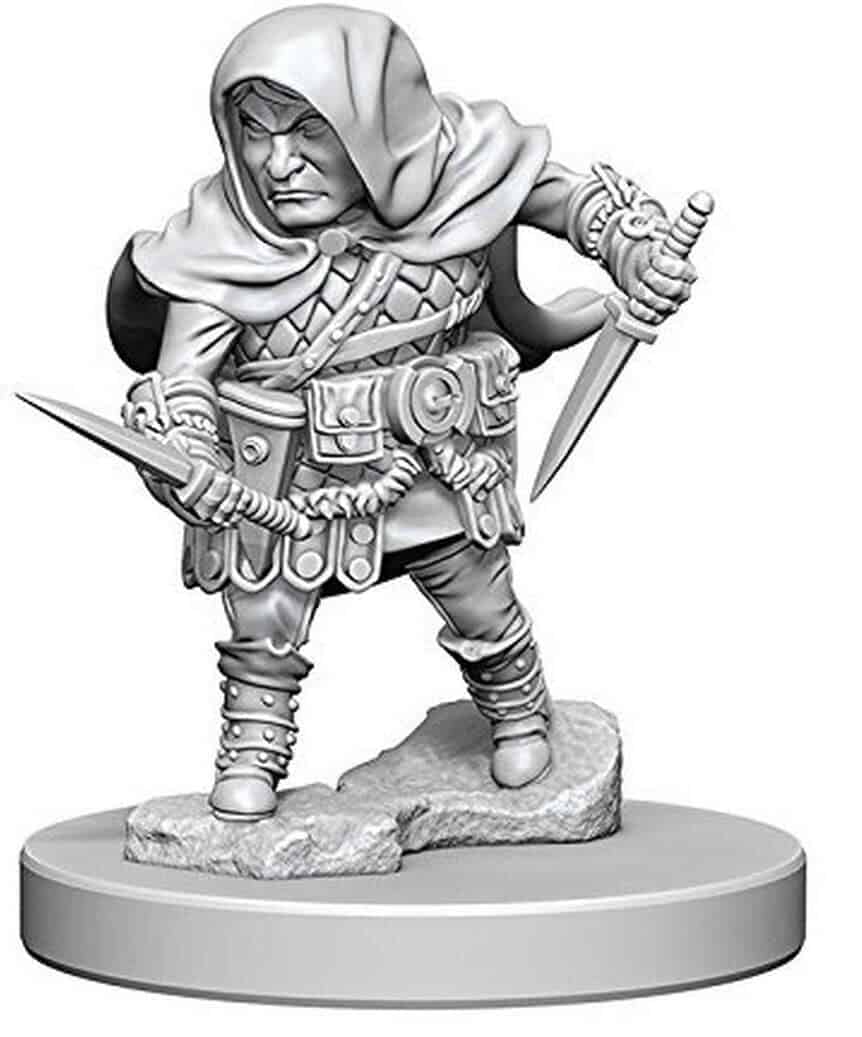
Thief (PHB)
The classic roguish archetype, the thief specializes in inability and stealth. They could be a pickpocket, burglar, or cutpurse, though other thieves prefer to call themselves treasure hunters or delvers.
- Fast Hands
You can use the bonus action granted by your Cunning Action ability to make a Dexterity (Sleight of Hand) check, use your thieves’ tools to disarm a trap or open a lock or take the Use an Object action. - Second-Story Work
Climbing no longer costs you extra movement and if you make a running jump, the distance you can cover increases by a number of feet equal to your Dexterity modifier. - Supreme Sneak
From 9th level onwards, you have an advantage on a Dexterity (Stealth) check if you move no more than half your speed on that turn. - Use Magic Device
Beginning at 13th level, you ignore all class, race, and level requirements for the use of magic items. - Thief’s Reflexes
At 17th level, you can take two turns in the first round of combat. Your first turn is taken at the normal initiative and your second turn is taken at your initiative minus 10. This cannot be done if you are surprised.
Frequently Asked Questions
Question: What race should I choose for a Rogue?
Question: What background should I choose for a Rogue?
Answer: Your background will likely depend on your roguish archetype. Thieves, Arcane Tricksters, and Soulknives could be Urchins, Swashbucklers and Masterminds might be Noble or Sailors and Scouts could be Outlanders. The great thing about the Rogue is the archetypes allow for lots of fun roleplaying so spend some time thinking about your backstory.
Question: What is the best roguish archetype?
Answer: Arcane Trickster, Phantom, and Thief are the best archetypes. Mastermind, Swashbuckler, and Soulknife are also strong choices.
Final Thoughts
With so many subclasses to choose from, Rogues are one of the most flexible and exciting classes to choose from. If you’re committed to playing a Rogue, especially if you want to choose one of their roguish archetypes, picking up a copy of Tasha’s Cauldron of Everything and/or Xanathar’s Guide to Everything will give you additional abilities and customization options to choose from.
- Best Alternatives to Dungeons & Dragons - August 23, 2023
- Wyverns 5e Guide: The Chickens of the Dragon Family - September 5, 2022
- Best DnD Dice Tray Ideas for Players and DMs - August 22, 2022

